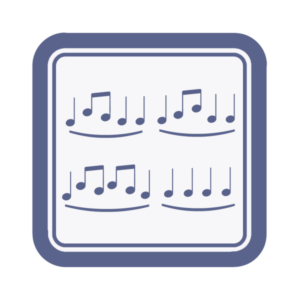
Phrasing and Structure
Learn how to use phrasing and structure to shape your improvised or composed melodies.
After completing this module: you will be able to improvise melodies that flow logically and meaningfully.
Like building architectural structures, building musical structures begins with smaller elements, arranging them into larger sections, and fitting those sections together into the finished whole.
Module Preview
Contents
- Introduction
- Phrasing
- Shape Your Own Phrase
- Licks, Riffs, and Motifs
- Game of Licks
- Call and Response
- Structure and Form
Phrasing seems an odd word to use when talking about music.
It sounds like grammar, not music.
But “grammar” is exactly what phrasing is about. Many beginning improvisers start with a scale, and run it up and down over the chords. But think of the notes of the scale like words. If you speak words in a jumble, even if they are the “right” words, the result can be unintelligible.
and cat dog the the ate
But with a few grammatical rules you can arrange the same words to express different ideas:
And the dog ate the cat.
And the cat ate the dog.
The dog and the cat ate.
The same goes with the notes in a scale. Here’s an improvisation using a major scale rather randomly:
Random D Major Improv
Now listen to this:
Meaningful D Major Improv
Same scale, same notes. But the phrasing made all the difference.
So how does one know what notes to choose in what order?
Part of that is determined by the inner harmonic architecture of a given scale, which gives meaning to the choice of pitches in the melody. Notes in a scale will naturally have a tendency towards degrees of tension or release, which we go into in depth with our Harmonic Tension and Release module.
But beyond the ordering of notes themselves, there are more musical dimensions that can be used to shape a phrase.
Dimensions of Phrasing
You may have noticed some other musical tools besides note choice that gave shape to the second musically phrased example above. Let’s zero in on these other musical dimensions. Listen, carefully, to these two examples:
Robotic
Phrased
You’ll hear that there’s more going on there than just the sequence of notes.
Can you name two or three musical dimensions that are used here to give more shape to the musical phrase?

